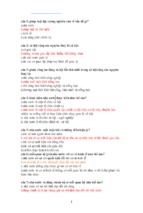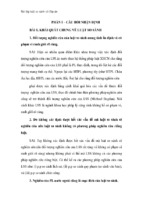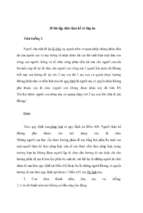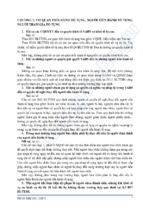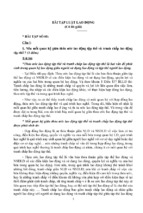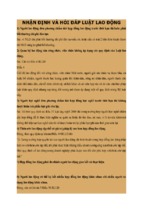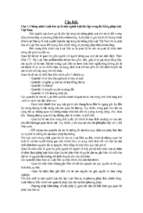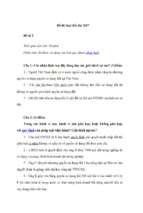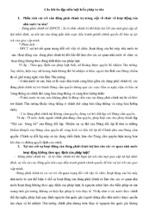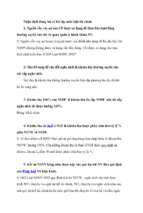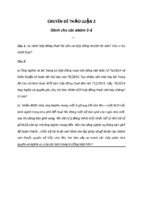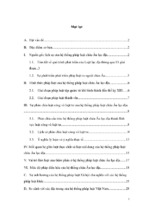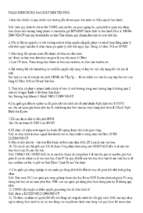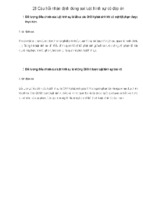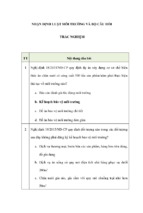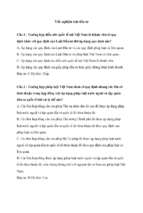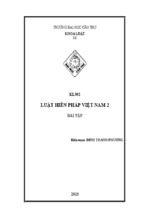MINISTRY OF EDUCATION AND TRAINING
MINISTRY OF HEALTH
HANOI MEDICAL UNIVERSITY
LY MINH ĐUC
EVALUATION OF VISION FUNCTION OF
STUDENTS IN POLICE ACADEMIES AND
UNIVERSITIES IN HANOI
Specialization: Ophthalmology
Code: 62720157
DOCTORAL THESIS SUMMARY
HA NOI – 2020
The work was completed at:
HANOI MEDICAL UNIVERSITY
Science instructor:
1. Associate Professor, Ph.D Le Thi Kim Xuan
2. Associate Professor, Ph.D Nguyen Đuc Anh
Reviewer 1:
Reviewer 2:
Reviewer 3:
The thesis has been defended in front of the State-level Council of
Thesis Grading
Meeting at: Hanoi Medical University
At , , , 2020.
The thesis can be found at:
-
National Library
-
Hanoi Medical University's Library
WORKS RELATED TO THE THESIS
PUBLISHED
1.
Ly Minh Đuc, Le Thi Kim Xuan (2019). Current situation of
short-sightedness of students of Public Security Academies
and Universities in Hanoi in the academic year 2016-2017.
Journal of Practical Medicine. 6 (1101). 103-107.
2.
Ly Minh Đuc, Le Thi Kim Xuan (2019). Current situation of
the regulation ability of students of Public Security Academies
and Universities in Hanoi in the academic year 2017-2018.
Journal of Practical Medicine. 6 (1101). 122-126.
3.
Ly Minh Đuc, Le Thi Kim Xuan (2019). Survey of color
vision in students of some Hanoi Public Security schools with
Ishihara board. Journal of Practical Medicine. 12 (1123). 5256.
4.
Ly Minh Đuc, Le Thi Kim Xuan (2020). Survey of
stereoscopic vision in 3rd year students of Public Security
Academies and Universities in Hanoi. Vietnam Journal of
Medicine.1 (No. 486). 70-74.
1
INTRODUCTION
Vision is one of the five important senses of humans. The current
gold standard in assessing visual function is vision, but sometimes vision
is an indicator that provides only a limited amount of information
obtained in the current living condition. The patient's vision is not merely
based on the results of the optometry but also in combination with other
examinations such as stereoscopic vision, color vision and contrast
vision.
Studies of visual function in the world show that, in Asia, myopia is
an important health problem in the student community, myopia rate is
often high in countries: China, Japan, Taiwan and Singapore, in which
Taiwan's rate of myopia in students age 18 is 80%. Magosha Knutelska
(2003) states that stereoscopic vision is best achieved before age 30 and
the worst after 60 years. The rate of congenital color disorder according
to the study of Mohd Fareed (2015) in men is 7.52% and in women is
0.83%.
In Vietnam, there are a number of researches to screen for
congenital color disorders and refractive errors, a study by Nguyen Thi
Mai Dung (2006) shows that the rate of male color disorders is 3.01%, in
women it is 1.35%. Phi Vinh Bao's study (2017) found that the rate of
myopia in military students was 16.9%.
For the police, due to the professional characteristics, the detection
of visual dysfunction is very important in practical work. In particular,
students of police schools play a key role in the fight to preserve order
and protect the National security. Comprehensive study of visual
function will provide sufficient information, help us to plan and
implement policies to enhance the visual function of police students in
particular and for the police force in general.
Recognizing the importance and impact of the above issues, we
conducted research on the subject: "Assessment of visual function in
students of Hanoi Regional Police Universities and Public Security
Institutes" with the following aims:
1. Describe the situation of visual function in 3rd year students at 4
Hanoi Academy and Public Security Schools in 2017.
2. Identify factors affecting visual function in 2017.
3. Assess the effectiveness of interventional health education
communication interventions for nearsighted progress in 20172018.
2
THESIS’S NOVEL CONTRIBUTION
- This is the first descriptive and interventional study in Vietnam to
evaluate comprehensively the visual function, allowing the evaluation of
factors affecting visual function, thereby appropriately applying various
methods of changing behavior to improve visual quality.
- This is the first time research subjects are Police students. The
entrance examination for police schools is very tight, but only stops at
vision and refractive exams. Therefore, a comprehensive assessment of
visual function requires other examinations such as: Stereoscopic vision,
color vision, and contrast vision, have shown us that there are cases of
good vision that still experience visual dysfunction.
STRUCTURE OF THE THESIS
The thesis consists of 128 pages, including the Introduction (2
pages) and 4 chapters Chapter 1: Overview (38 pages), Chapter 2:
Subjects and research methods (19 pages), Chapter 3: Research results
(31 pages), Chapter 4: Discussion (34 pages), Conclusion (2 pages), new
contributions (1 page), Recommendations (1 page).
There are also: section of references, appendices, tables, charts,
illustrations of the results.
CHAPTER 1: OVERVIEW
1.1. SOME CONCEPTS AND METHODS OF MEASURING
VISUAL FUNCTION
1.1.1. Visual acuity
1.1.1.1. Definition
Visual acuity is an important part of the visual function, it consists
of many components, mainly the ability to distinguish light and the
ability to distinguish space.
Visual acuity examination is a fundamental and important part of
ophthalmology. Visual acuity assessment should always include both
distant vision and near vision. Normally, the distant vision and near
vision are always equal. Certain conditions affecting the eye's regulation,
such as presbyopia, unattended farsightedness, or cataract, etc., can cause
near vision loss, while distant vision is not affected.
Vision examinations will give us information about:
- Eye refractive condition.
- Macular function.
- The integrity of the optic nerve conduction pathway.
- It is possible to compare the sight of one eye to two eyes or
between two eyes to know the vision of the eyes.
3
1.1.1.2. The examination of visual acuity
There are many visual function tests used to measure an aspect of
the ability to see clearly or identify target details of the visual system.
These exams include:
Minimum detectable resolution
The detection threshold is the threshold of a person's visual system
that detects the presence of a point or line on its background.
Minimum resolution
The threshold of recognition is the ability to resolve details. Clinical
vision measurement is based on this type of visual function.
Minimum separable or vernier acuity
Vernier acuity is the ability of a person to detect whether a group of
points or lines is separate and distinct or not.
1.1.2. Stereoscopic vision
1.1.2.1. Definition
Stereoscopic vision is the ability to perceive two images that are
nearly identical from the two-eye retina uniting to form a complete image
with full details in all three dimensions.
Stereo eyesight is considered to be the highest level of binocular
vision. Stereo stereometry is one of the most important examinations
when we conduct vision assessment on children, because it brings a lot of
information about the development of the child's visual system.
1.1.2.2. Classification of stereoscopic vision
- High-quality stereoscopic vision, also known as fine stereoscopic
vision Response to high spatial frequencies (sophisticated details).
- Rough stereoscopic vision mainly responds to low-frequency
spatial targets (large objects).
1.1.2.3. Methods to measure stereoscopic vision
Stereoscopic vision is possible due to the difference in binocular
images. This difference can be created in two ways:
- Through the stereoscopic images: where two 3-dimensional images
are seen in each eye separately, but the correct 3-dimensional image is
obtained when there is a visual difference between the right eye and the left
eye. For example, Fly test board, animals and Wirt rings of Randot board.
- Through random dot stereographic images in which 3-dimensional
images are not visible with separate right or left eye, only see when there
is information difference between right eye and left eye. For example:
Lang table, Randot picture board.
Some stereoscopic vision tables commonly are used in clinical
practice:
4
Fly test table and Random Dot test table
1.1.3. Color vision
1.1.3.1. Definition
Color vision is a visual function that allows one to be aware of the
different wavelengths of light of the visible spectrum, the ability of the
eye to discern the colors produced by the interaction of billions of cells.
nerve on the cerebral cortex.
1.1.3.2. Color vision disorders
Color vision disorders are one of the most common visual
disorderss, characterized by reduced or inability to distinguish colors one of the main functions of vision. Color vision disorders may be due
to congenital or acquired disorderss.
Congenital color vision disorders
Congenital color vision disorders are genetic damage related to
gender. It is found that about 7-8% of men and about 0.4% of women
have such a disorders.
Today, congenital color vision disorders has been shown to be a
genetic disease in genes. Color blindness on the red-green scale is the
recessive inherited disease on the sex chromosome, and the color
blindness on the blue-yellow scale is dominant on the normal
chromosome.
Color blindness is divided into 3 categories:
(1) Total color blindness: People who have total color blindness do
not have two or three types of cones.
(2) One-color blindness One-color blind people are completely or
partially missing the cone cell pigment system.
- Red blindness: is an abnormality of red light absorbing pigment.
- Green blindness: is an abnormality of green light absorbing pigment.
- Blue blindness: is an abnormality of blue light absorbing pigment.
5
(3) Color vision disorders: People who have color vision disorders
have a completely or partially altered cone cell pigment system
Color vision disorders are divided into:
- Red weak blindness: almost similar to red blind, perceive red
darker than normal.
- Green weak blindness: almost similar to green blind, perceive
green darker than normal.
- Blue weak blindness: Difficult to distinguish green and blue, very
rare and often acquired, or accompanied by red - green disorderss.
Acquired color vision disorders
Acquired color vision disorders is the lack of color perception
caused by eye diseases. Acquired color vision disorders are more
common than congenital color vision disorder. The incidence rates are
similar for both sexes, with an estimated 5% of the population.
Chronic conditions that can lead to color blindness include
Alzheimer's disease, diabetes, glaucoma, etc., accidents or strokes,
medications such as antibiotics, barbiturates, anti-tuberculosis drugs, and
high medications. Blood pressure and some medications to treat
neurological disorders can also cause color blindness.
1.1.3.3. Examination method for Color vision disorders
The method of using the Ishihara color palette is the most widely
used, it is considered the most effective examination to screen for
congenital color disorders on the red-green scale.
Ishihara color vision board
1.1.4. Contrast vision
1.1.4.1. Definition of Contrast
Contrast is created by the difference in brightness, the amount of
light reflected from two adjacent surfaces. Contrast has a particularly
important meaning for sight. It is a physiological function of the visual
6
function that can alter and greatly affect the ability to distinguish stimuli
during visual perception.
1.1.4.3. Contrast vision
Contrast vision is produced on the basis of differences in brightness.
Strongly lit areas of the retina have a positive effect on areas with weaker
lighting, or the opposite of weakly lit areas can be reversed.
Examination methods of contrast vision
There are two methods of contrast vision measurement currently in
use: measuring gratings and letter contrast vision
Clinically often use letter contrast vision method.
Bailey-Lovie and Pelli-Robson vision chart
The role of contrast vision
Contrast vision measurement allows us to determine the least
amount of contrast needed to detect a visual stimulus and gives us a more
complete result of the patient's visual function.
1.2. RESEARCH SITUATION ON STEREOSCOPIC VISION, COLOR
VISION AND CONTRAST VISION
1.2.1. Worldwide
1.2.1.1. Research on stereoscopic vision
G. Research Heron et al. (1985) demonstrated that stereoscopic
vision tends to improve and develop with age.
Research by Magosha K et al. (2003) suggested that stereoscopic
vision is best achieved before age 30 and least after 60 years.
1.2.1.2. Research on color vision
Research by Karim J Karim et al. (2013) showed that 8.47% of male
students, 1.37% of female students were found to have congenital color
disorder in the student population, university students of Erbil city in
Kurdistan-Iraq region
7
1.2.1.3. Research on contrast vision
A study by Yamane N et al. (2004) found that contrast vision
decreased significantly in Lasik surgical subjects with myopia treatment.
1.2.2. In Vietnam
Research on visual function in Vietnam has not been deeply
concerned and evaluated comprehensively, there are a number of
researches to screen for congenital color disorders using Ishihara test.
A study by Tran Thi Thanh et al (2012) on the first-year students of Hai
Phong Medical University showed that the prevalence of color vision disorder
in men is 8.05% and there is no case of color vision disorder in women.
Currently, there is no research on stereoscopic vision and contrast
vision in Vietnam Therefore, a comprehensive study of visual function is
a practical and very new issue in Vietnam.
CHAPTER 2 SUBJECTS AND METHODS OF THE STUDY
2.1. SUBJECTS OF THE STUDY
• Subjects selected for the study: third year students at the Hanoi
regional Police Academies and Universities
• Selection criteria: Participants in the study were in good health, no
systemic diseases, no history of eye injury, traumatic brain injury.
• Exclusion criteria: students with physical damage to their eyes.
2.2. METHODS OF THE STUDY
2.2.1. Research design
- Cross-sectional descriptive study: to determine the visual disorder
rate of police students.
- Intervention research: to assess the effect of behavioral changes on
myopia progression.
2.2.2. Study sample size
2.2.2.1. Cross-sectional descriptive study
Sample size Apply the formula of an estimated 1-ratio sample size in
population.
n = Z (1− / 2)
2
p(1 − p)
e2
Therein:
n: number of researched students
Z1-α/2: confidence limit, with a 95% confidence → Z1- α 2 = 1,96
p: The rate of visual disorder in students is estimated according to the
previous research results, which is 10.14%.
e: expected deviation e = 0.03
8
Plug the number into the formula we have: n = 389, practical study of
400 students.
2.2.3. Sampling method
Use convenient sampling methods
2.2.4. Location and study time
* Research location: The study was conducted at 4 Hanoi police schools.
- Security Academy
- T32 Police Academy
- Police Political Academy
- University of Fire Fighting and Prevention
* Research period: The study was conducted over 3 years from
December 2016 to December 2018.
2.2.5. Research facilities
- Snellen vision table, eye examination microscope, automatic
refractometer, AB ultrasound machine, Javal corneal refractometer,
direct ophthalmoscope, lights: white light, stereoscopic vision kit: Fly
test table and polarized sunglasses, Ishihara table of colors 38 tables,
Pelli-Robson contrast vision board, Cyclogyl 1% polio.
- Set of data collection slips.
- Research records to record the necessary information.
2.2.6. Research content
- Vision assessment:
+ Vision classification:
- Good 20/20 – 20/50.
- Average 20/50 – 20/200.
- Poor Below 20/200
- Eye examination
+ Microscopic eye examination to identify the abnormalities of the
eyeball.
+ Cross-eye examination, eye movement, detection of eyeball shock.
+ Investigate the maximum mydriasis, retinal condition assessment by
direct ophthalmoscope.
- Determination of refraction:
+ Use Refractometer
+ If the refractive error is identified, apply Cyclogyl 1% regulatory
paralysis, and after 2 hours, measure by the refractometer to determine
whether there is a refractive error, and adjust the glasses to achieve
optimal vision.
- Stereoscopic vision evaluation: Use the Fly test table to assess the
stereoscopic vision level.
9
- Evaluation of color vision: Use Ishihara color vision board.
- Evaluation of contrast vision Use the Pelli-Robson optometrist
board.
- Assessing perceptions of refractive errors: Use the data collection
form.
2.2.7. Research variables
- Gender characteristics.
- Age group characteristics.
- Characteristics of refractive errors.
- Classification of vision:
+ Good
+ Average
+ Poor
- Classification of stereoscopic vision:
+ Available
+ Absent
Classification of color vision:
+ Normal
+ Color blind red-green color blindness, blue-yellow color blindness
and total color blindness.
- Classification of contrast vision:
+ Good
+ Average
+ Poor
- Analysis of some factors related to visual function:
+ Some risk factors for myopia.
+ Some factors affecting stereoscopic vision.
+ Some factors affecting color blindness.
+ A number of factors affecting contrast vision.
- Analyze the effectiveness of behavior change:
+ Proper knowledge about refractive errors.
+ Proper knowledge about the causes of refractive errors in daily life
and study
- Behaviors that affect refractive errors: lower head when studying, studying
while lying in bed, looking closely at an object for more than 2 hours.
- Change of behavior in 1 year of the researched student group.
- Changes in vision within 1 year of the group of myopia students.
- Myopia progression in 1 year of myopia student group.
Assessing myopia progression:
+ Slow progression when myopia level increases: < -0,5 D annually
10
+ Average progression when myopia level increases: -0,5 D → -1,0
D yearly.
+ Rapid progression when myopia level increases: -1,25 D → -1,75
D/yearly.
+ Rapid progression when myopia level increases: ≥ - 2,00 D/ year.
- Changes in some biological indicators of the eyeball: eyeballs’ axis
length, corneal curvature.
Assessing the length of the eyeball axis:
+ Slowly progressing: ≤ 0,18 mm/year.
+ Averagely progressing: 0,19 - 0,36 mm/year.
+ Rapidly progressing > 0,36 mm/year
2.2.8. Data processing
The collected data of the study was processed according to the
medical statistical algorithms on the computer with the help of SPSS
software version 2.2. Use T test when comparing quantitative variables
and test 2 to compare qualitative variables, Fisher’s Exact test and Phi
and Cramer test to verify the statistics are closely related. The difference
is statistically significant when p value is ≤ 0.05. Assess the relationship
between visual function and influencing factors by calculating the odds
ratio (OR). Compare rates using χ2.
CHAPTER 3 RESEARCH RESULTS
3.1. THE CHARACTERISTICS OF THE SUBJECTS OF THE STUDY
3.1.1. Gender characteristics
Of the 400 study subjects, 352 males accounted for 88% and 48
females accounted for 12%. The number of male students is higher than
the number of female students, the difference is statistically significant
with (p <0.05).
3.1.2. Age characteristics
The average age of the study subjects was 22.37 (the lowest was 20
years, the highest was 33 years). In which, the age group of 21 accounted
for the highest proportion (28.5%), followed by the remaining 22 years
(23.5%), scattered in other age groups.
3.2. RESULTS OF VISION FUNCTION
3.2.1. The situation of myopia in researched student group
3.2.1.1. The level of vision of researched student group
Out of 400 students examined, 47 students showed signs of visual
impairment, accounting for 11.75%, vision loss mainly ranged from 0.4
to 0.2 LogMar.
3.2.1.2. The situation of refractive defects after regulatory paralysis
Before the regulatory paralysis, there were 47 students with visual
impairment (11.75%). After regulatory paralysis, there were 15 students
11
without refractive errors. Among 32 students with refractive errors, all 32
cases were nearsighted, no cases of farsightedness and astigmatism.
3.2.1.3. Situation of refractive error
The main cause of visual impairment in police school students is
myopia refractive errors, accounting for 8%. Out of 400 students
examined at 4 schools, 32 were found to be nearsighted, none of
farsightedness and astigmatism.
3.2.1.4. Situation of myopia after Lasik surgery
Of the 56 students who had Lasik surgery, there were 04 students
who had myopia relapse, accounting for 7.1%, 52 students who had
Lasik surgery without relapse had the proportion of 92.9%.
3.2.1.5. Level of myopia
Out of 32 near-sighted students, most students with low-grade
myopia accounted for 78.1% (myopia from -1.0D-3D), mediumsightedness (myopia from -3.0D to <-6.0D) accounts for 18.8%, myopic
severity (myopia ≥ -6.0D) accounts for 3.1%.
3.2.1.6. Distribution of myopia students by the time of discovery
The percentage of newly discovered myopia case at the examination
accounted for the highest proportion (71.86%), followed by the rate of
myopia with patients wearing glasses (15.64%), the rate of myopia after
Lasik surgery ( 12.5%) of the 32 nearsighted students in the study group
3.2.2. Stereoscopic vision measurement results
3.2.2.1. Stereoscopic vision by gender
The average stereoscopic vision is 30.3732.07 arc seconds. In
which the average stereoscopic vision in men is 30.4633.04 arc seconds,
the average stereoscopic vision in women is 29.6924.00 arc seconds.
3.2.2.2. Stereoscopic vision by age
The lowest average stereoscopic vision at the age of 21 is
25.7913.78 arc seconds, the highest at the age of 24 is 35.9536.95 arc
seconds. The average stereoscopic vision in the study group was
30.3732.07 arc seconds. There was no significant difference in the average
stereoscopic vision in all the age group in the study group (p> 0.05).
3.2.2.3. Stereoscopic vision with refractive errors
Table 3.13. Stereoscopic vision with refractive errors
Stereoscopic vision
Refractive errors
Myopia (n=32)
Normal (n=368)
General
LTTB+SD vision
Min-max
32,38 28,6
30,19 32,38
30,37 32,07
16 – 160
16 – 400
16 - 400
12
Of the 400 students who have their stereoscopic vision measured
The results show that the average stereoscopic vision in myopia students
is 32.38 28.6 seconds arc, normal students are 30.1932.38 arc seconds,
the average stereoscopic vision is 30.3732.07 seconds arc.
3.2.3. Color vision measurement results
3.2.3.1. Color vision of the subject of the study
Table 3.14 Color vision of the subject of the study
Color vision
Normal
Color blindness:
Total
Amount
388
12
400
Ratio %
97.0
3.0
100
Of the 400 students who were examined in color, 388 students with
normal color vision accounted for 97% and 12 students with color
blindness accounted for 3%.
3.2.3.2. Color vision of the subject of the study by gender
Color blindness is mainly detected in men, there is no case of female
color blindness. However, this difference is not statistically significant
with (p> 0.05).
3.2.3.3. Characteristics and levels of color blindness
Green blindness accounts for a higher proportion (58.3%) compared
to red blindness (41.7%). Among the 12 cases of color blindness, light
color blindness accounted for the highest rate of 50%, followed by
moderate color blindness 33.33%, severe color blindness 16.67%, there
was no case of complete color blindness.
3.2.4. Contrast vision measurement results
3.2.4.1. Contrast vision of the researched subjects
The researched subjects had average contrast vision for both eyes,
for the left eye (1,490.31 log), for the right eye (1,490.32 log) average
contrast vision of 2 eyes (1,680.28 log) higher than 1 eye.
3.2.4.2. Contrast vision based on age and gender
There was no significant difference in one-eye and both-eye
contrast between the age groups and gender in the researched groups. The
average contrast vision of one eye in all age groups is 1,490.32 logs, that of
the two eyes is 1,680.28 logs.
3.3. FACTORS AFFECTING VISION FUNCTION
3.3.1. Some risk factors for nearsightedness in Police students
3.3.1.1. The relationship between myopia and gender
The percentage of male students who are nearsighted is 3 times
higher than that of female students. The difference was statistically
significant with (p <0.05). There is a relationship between myopia and
gender in the researched group
13
3.3.1.2. The relationship between myopia and age group
The rate of myopia in the researched student group concentrates in
the age group 21-22, scattered in other age groups. No correlation
between myopia and age in researched student group (p> 0.05)
3.3.1.3. The relationship between myopia and family history
Students in families with parents who are nearsighted are 2.38 times
more likely to be nearsighted than students in families without myopia.
This difference is statistically significant (p = 0.038 <0.05).
3.3.1.4. The relationship between nearsightedness and activity time close
Near-sighted activities like reading, using computers, phones,
watching TV and playing video games for more than 8 hours a day are
closely related to myopia in the researched group with (p < 0.01).
3.3.1.5. The relationship between myopia and time spent outdoors
Students who participate in outdoor activities for more than 2 hours a
day, such as sports, and participate in extracurricular activities, are less likely
to have myopia compared to students whose outdoor activities time is under
2 hours / day. The difference was statistically significant with (p <0.05).
3.3.2. Several factors affect stereoscopic vision
3.3.2.1. Relationship between stereoscopic vision and gender
The average stereoscopic vision in men is 30.5833.28 arc seconds,
in women is 29.0223.04 arc seconds. There was no significant
difference in the level of stereoscopic vision between men and women in
the researched group (p> 0.05).
3.3.2.2. Relationship between stereoscopic vision and refractive errors
The average stereoscopic vision in the group of myopia student is
32.3828.6 seconds arc, the normal student group is 30.1932.4 seconds arc.
There was no significant difference in stereoscopic vision between myopia and
normal students. The difference is not statistically significant with (p> 0.05).
3.3.2.3. Relationship between stereoscopic vision and myopia level
The average stereoscopic vision in a case of students with severe
nearsightedness (40 second arc) is lower than the group of students with mild
myopia (32.831.59 arc seconds) and average ones (29.3316.08 arc seconds)
). However, this difference is not statistically significant with (p > 0.05).
3.3.3. Several factors affect color blindness
3.3.3.1. Relationship between color blindness and family history
There were 12 cases of color blindness among 400 students
examined. In particular, the number of students who are color blind with
a history of parents with color blindness is 4 students, accounting for
100%, higher than the rate of students who are color blind without a
14
parent history of color blindness, which are 8 students accounting for
2%. This difference is statistically significant with (p < 0.01).
3.3.3.2. The relationship between color blindness and gender
The total number of male students is 352, with 12 students who
detect color blindness accounting for 3.5%. While the total number of
female students was 48, no cases of color blindness were detected.
However, this difference is not statistically significant with (p> 0.05).
3.3.3.3. Relationship between color blindness and refractive error
The group of students with normal color vision and without
refractive errors accounts for a high proportion (97.3% and 93.7%).
Meanwhile, the group of color blind students with myopia had a higher
proportion (6.3%) than the group of color blind students without
refractive errors (2.7%). However, this difference is not statistically
significant with (p> 0.05).
3.3.4. Some factors affecting contrast vision
3.3.4.1. Relationship between contrast vision and gender
The average contrast vision of each eye and both eyes in men is always
higher than women. The difference was statistically significant (p <0.01).
3.3.4.2. Relationship between contrast vision and refractive error
Table 3.40 Relationship between contrast vision and refractive error
The average contrast vision in the group of students without
refractive errors (1.690.27 log) is higher than the average contrast
vision in the student group with myopia (1.590.27 log). This difference
is statistically significant with (p <0.05).
3.4. THE EFFICIENCY OF CHANGE IN BEHAVIOR IN
RELATION TO THE DEVELOPMENT OF MYOPIA
3.4.1. Change of student's awareness regarding nearsightedness
Table 3.42. Students’ awareness about nearsightedness before and
after intervention
Passed
Passed
Passed
Before
After intervention
intervention
SL
Ratio % Quantity Ratio %
158
39.5
299
74.8
142
35.5
293
73.3
147
36.8
289
72.3
< 0,001
< 0,001
< 0,001
Passed
154
< 0,001
Students’
awareness
Definition
Cause
Negative effects
Preventive methods
myopia
38.5
288
72
p
15
After the intervention, the percentage of students who know about
the concept, causes, harms and how to prevent myopia increases
significantly. This difference is statistically significant with (p <0.001)
3.4.2. Changes in students’ behavior towards nearsightedness
Table 3.43. Students’ behavior towards nearsightedness before and
after the intervention
before intervention After intervention
Students’ behavior
Towards nearsightedness Quantity Ratio % Quantity Ratio %
Lowered neck
Yes
112
28
89
22.3
Study while
Yes
34
8.5
27
6.8
lying in bed
Look at object
closely for
Yes
261
65.3
178
44.5
more than 2
hours
p
< 0,001
0.016
< 0,05
< 0,001
After the intervention, the rate of students who have lowered necks
when studying decreases, the rate of students lying in bed when reading
also decreases and the time for near-sighted activities such as using
computers, phones, playing video games is also reduced. This difference
is statistically significant with (p <0.001).
3.4.3. Myopic changes before and after the intervention
The average level of myopia after intervention (1.41 ± 1.26D) is
lower than the average level of myopia before intervention (1.88 ±
1.22D). The difference was statistically significant with (p <0.001).
3.4.4. Vision changes before and after the intervention
There was a difference in average vision of myopia student group
after intervention (0.24 ± 0.12), better than those before intervention
(0.30 ± 0.13). This difference is statistically significant with (p <0.001).
3.3.5. The change in the length of the eyeball axis before and after the
intervention
There was no difference in the length of the eyeball axis before and
after the intervention of the group of myopia students at the researched
schools with (p> 0.05).
3.3.6. Corneal refraction before and after intervention
The average corneal refraction after intervention (43.55 ± 0.26) was
slightly lower than before the intervention (43.59 ± 0.25) but in general it
was not significantly reduced. There was no statistically significant
difference between corneal refraction before and after intervention (p> 0.05).
16
Chapter 4: DISCUSSION
4.1. CHARACTERISTICS OF SUBJECTS PARTICIPATING IN THE
STUDY
Our study was conducted on 400 subjects who are 3rd year students
of 4 Hanoi police schools, the results showed that:
The proportion of men accounts for 88%, and that of women
accounts for 12%. The average age of the study subjects is 22.37; the lowest
is 20 years old, the highest is 33 years old, the most common is 21 years old.
The reason we selected the researched group in this age group is as follow:
Firstly, we found that at this age, the growth and development of the
human body has reached the highest level, the length of the eyeball axis
is relatively stable so the rate of myopia at this age rarely face any
fluctuations. It is worth noting that a number of students who had been
admitted to the police schools have had surgery to treat refractive defects
to comply with the specific commitment of the Public Security
Department. But after a period of intense learning and training, there
were changes in eyesight and refractive errors in the eyes.
Secondly, we examine them to detect color disorders at this age for
the purpose of giving advice to the subjects. Currently in Vietnam as well
as in the world, there is no complete treatment for color blindness.
Therefore, the awareness of color disorders is extremely important for
police students, so that after graduation they will choose an appropriate
job position for themselves.
4.2. RESULTS OF VISION FUNCTION
4.2.1. The status of myopia in researched student group
4.2.1.1. Actual nearsightedness after regulatory paralysis
Out of 400 students examined, 47 students showed signs of vision
loss and refractive errors, accounting for 11.75%. After applying the
regulatory paralysis drop for the above 47 students, the results showed
that 15 students without refractive errors and vision returned to normal
after re-examination, 32 students are found with refractive errors. Among
32 students with refractive errors, all 32 cases were nearsighted,
accounting for 8%, without presbyopia and astigmatism. The result also
found that the rate of refractive errors decreased significantly after
regulatory paralysis by 3.75%.
4.2.1.2. The status of myopia in the researched schools
The study results show that the rate of myopia in the researched group is
8%, this result is similar to our previous research results in 2016 of 10.14%.
In the study of author Nguyen Minh Tu et al (2014) on 1129 firstyear students of Hue University of Medicine and Pharmacy, the results
showed that the rate of refractive errors accounted for 43.84%.
17
Compared with the results of the above authors, the results of our study
have a lower rate of myopia. This can be explained that the admission work
at the Public Security schools is relatively strict and requires the first-class
eye health to be admitted to the industry. Therefore, this somewhat limits the
rate of myopia students enrolled in the school.
4.2.1.3. The status of myopia by gender
Results of the study show that the rate of myopia in male students is
3 times higher than female students. The difference was statistically
significant with (p <0.01%). This can be explained by the fact that male
students use their eyes when looking closer than female students to use
computers to play games, phones and read stories ... Therefore, the eyes
will have to regulate much more intensively when looking closely.
4.2.1.4. The status of newly-discovered myopia cases during examination
The research results show that the rate of newly-discovered myopia
cases during examination accounts for the highest proportion (71.86%),
while the rate of myopia with glasses before is 15.64% and myopia rate
after Lasik surgery is 12.5%. Research results for routine eye
examinations are important for detecting students with reduced vision.
4.2.2. Stereoscopic vision measurement results
The results of our study show that the average stereoscopic vision in the
group of students without refractive errors is 30 arc seconds, and that in myopia
student group is 32 arc seconds. Research by William J. Benjamin (2006)
reported that the stereoscopic vision in normal humans was 40 arc seconds.
Compared with the results of other authors, we found that the results
of stereoscopic vision without refractive errors in our group was lower
than in some studies of other authors.
Author Sheery L. Fawcett (2014) studied 44 subjects without
refractive errors, the average age of the study group was 35, giving
stereoscopic vision of 40 arc seconds.
The study of Hamed Momeni Moghadam et al. (2011) conducted on
174 students of Zahedan University of Medical Sciences aged 18 to 24,
obtained stereoscopic vision of 45 arc seconds.
The difference in results may be due to the use of kits for
stereoscopic vision measurement. We use the improved Fly test kit.
4.2.3. Color vision measurement results
4.2.3.1. Color blindness detection rate
We used the Ishihara test to test the color of all 400 subjects. As a
result, 388 students with normal color vision accounted for 97%, 12
students with color blindness accounted for 3%. .
Research by Tran Thi Thanh et al (2012) on subjects who are firstyear students at Hai Phong Medical University showed that the
- Xem thêm -

